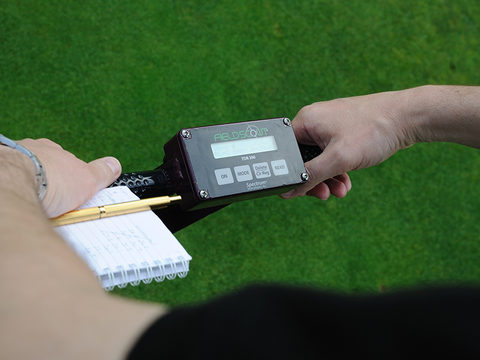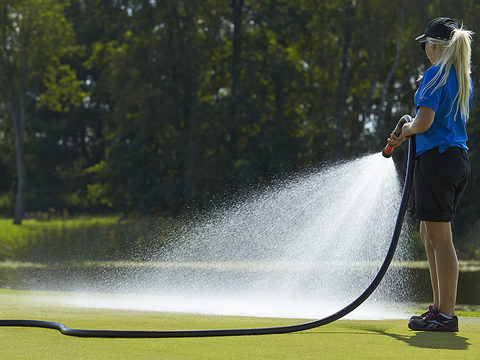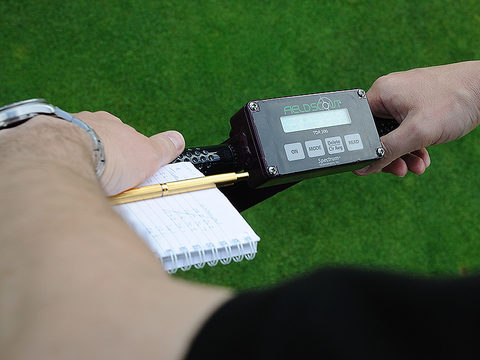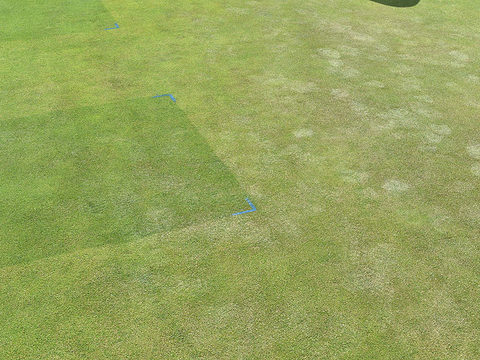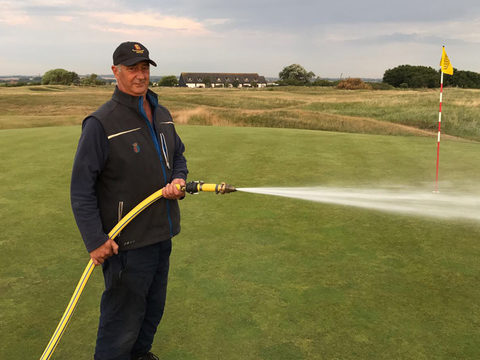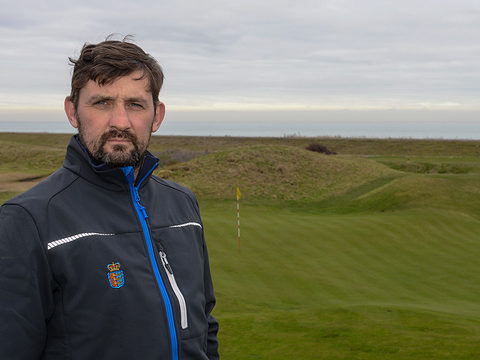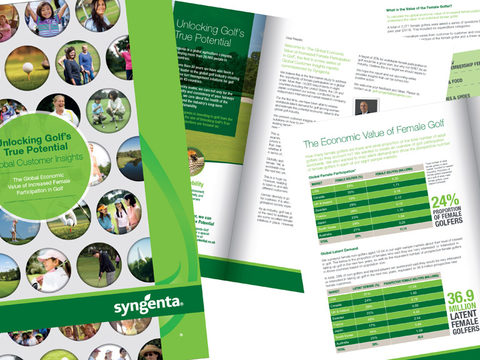ET data drives soil moisture decisions
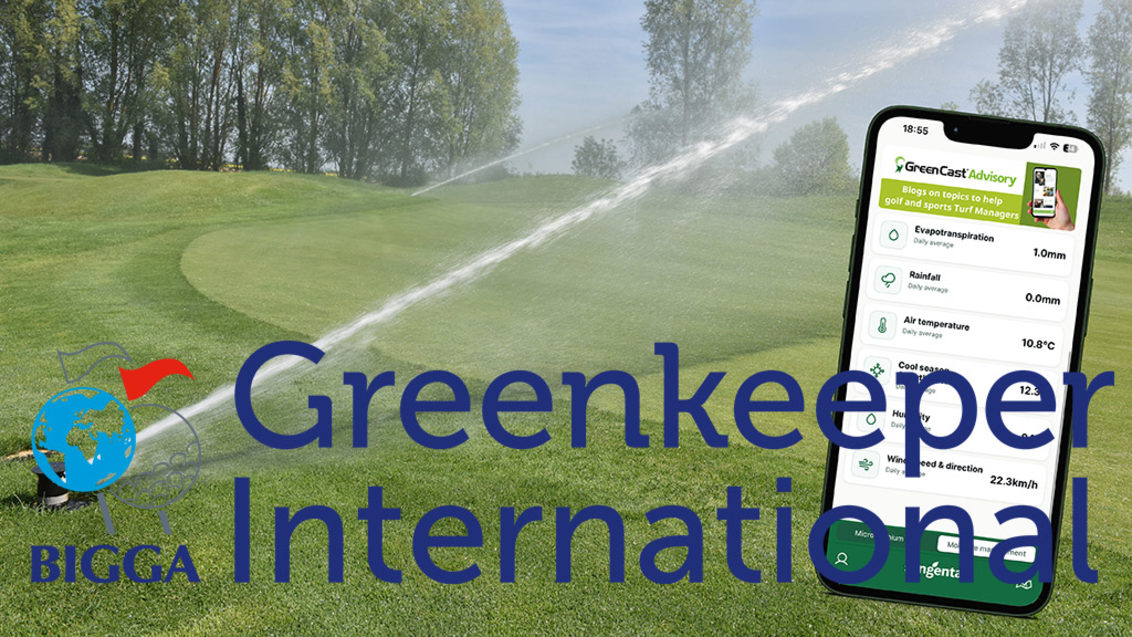
New techniques to manage soil moisture could enable more effective responsible and sustainable use of water resources, and further enhance integrated control of turf diseases.
While soil moisture levels have historically often focussed on surface firmness and playability, new research and agronomy tools can enable greenkeepers to manipulate and maintain moisture in the root zone, to better support turf plant health and soil microbial activity, reports Syngenta Technical Manager, Sean Loakes.
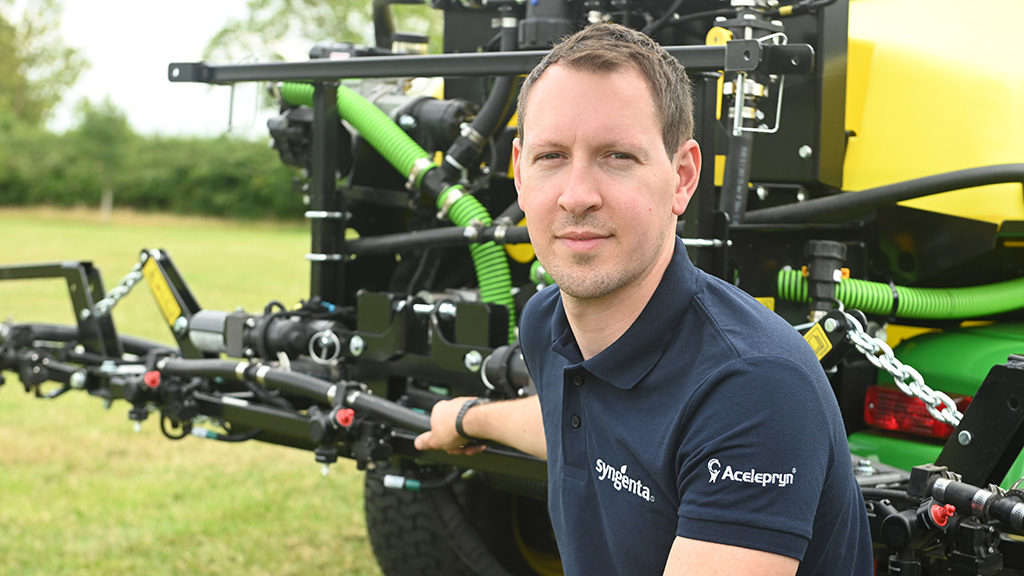
Key to the decision-making process and achieving more consistent control is better interpretation of evapotranspiration (ET) measures, and its specific application for turf surfaces. The Syngenta Turf Advisor app uses the internationally recognised Penman-Monteith equation that includes a crop coefficient for grass, which gives an infinitely more applicable figure compared to meteorological data calculating net evapotranspiration.
Typically, irrigation recommendations on greens have been to continually replace 70% of daily ET levels. However, many courses find that this results in too much water being applied and implications for surface quality.
In practice most generally find that maintaining a 60% ET replacement rate is acceptable, but in some instances that could be as low as 50%.
The ET model itself is extremely reliable, but each course needs to find what replacement rate works for them, to hold soil moisture at an adequate point.
That will depend on multiple factors and can vary across the course, between different greens or even within the same green. But once you have benchmarked the implication of ET rates for your course, it is an immensely powerful tool to optimise and tailor irrigation timing and rates to fix deficits, as well as reduce the need for hand watering.
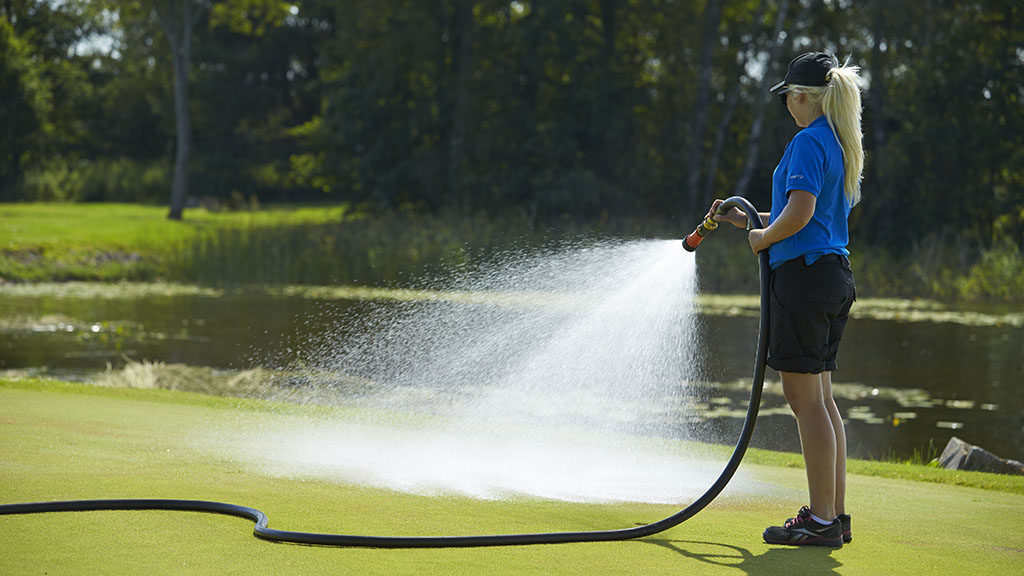
Studies of Turf Advisor historic ET rates last year pinpoint the seasonal effects, from less than 20mm per month in winter, up to in excess of 140mm at the high point in June (Fig 1). Along with the typical regional differences that occur from the south of England, to the north and also into Scotland.
Where understanding the implication of ET and adapting turf management techniques enable the ET replacement rate to be reduced from 70% to 50%, for example, irrigation could potentially have been cut by nearly 28mm a month in mid-summer in the south, and more than 15mm in Scotland. That reduction would equate to almost 1.3 million litres or nearly 1,300 M3 of water saved during the growing season on a southern course’s greens alone . That before we think about tee’s approaches or wider areas of fairways that may be irrigated.
Some of the factors influencing or impacted by ET rates, such as soil type, organic matter and turf grass species would be slow or impossible to change. However, there are still many tools and techniques to manage moisture that are within the greenkeepers’ toolbox.
Wetting agent technologies, such as Qualibra, can clearly have a significant influence on water movement. That includes both moving water down from the surface to improve firmness, as well as potentially reduce evaporation losses, along with improving retention deeper in the soil profile for root health.
Data on local ET rates and natural rainfall enables more effective wetting agent strategies to be implemented earlier in the season, when there is water resource available to make use of, compared to curative catch-up situations - when soils have already dried and the effects seen on turf.
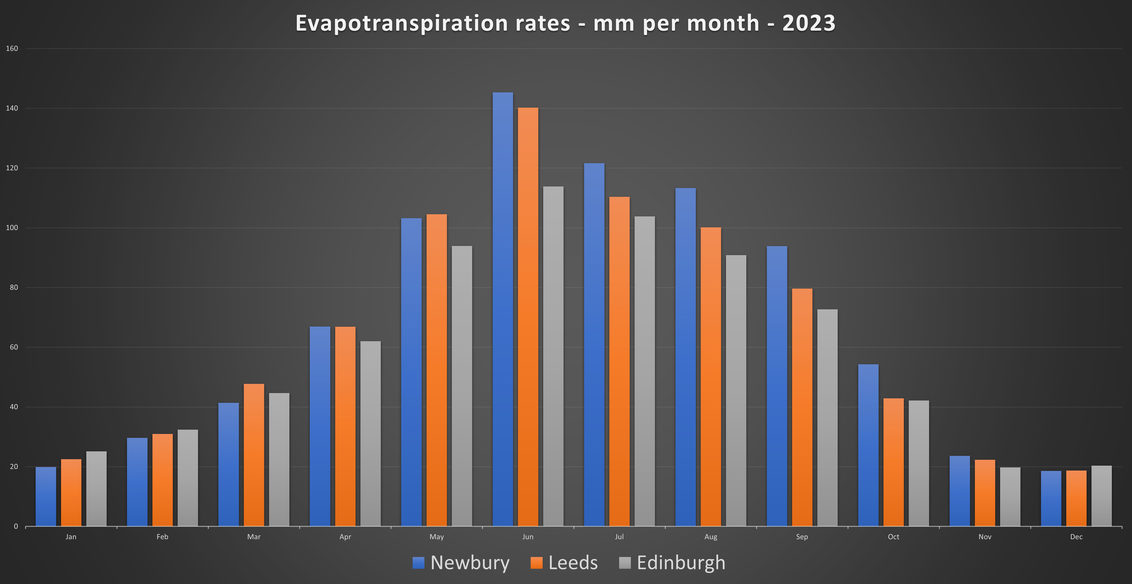
Root mass is an essential consideration in managing soil moisture, since a larger and deeper root structure is better able to access and utilise water, as well as nutrient inputs, for plant health.
Turf with a greater root mass is likely to be more resilient to greater ET deficits.
However it is also a fact that if soils get too dry the root mass will die back – particularly the fine root hairs crucial for water uptake. It’s an important element of managing the balance between sustainable ET replacement and retaining soil moisture levels.
Integrated turf management (ITM) techniques to encourage plant rooting - including aeration, cutting height, nutrition, wetting agents and Primo Maxx II PGR - gives the opportunity to stay in control with greater flexibility in responding to ET and managing moisture strategies through the season.
Syngenta turf R&D has shown Primo Maxx II will help plants to regulate stomatal opening and enhance photochemical efficiency of water use, which further enables greenkeepers to fine-tune irrigation scheduling and use with knowledge of how their turf reacts to the prevailing ET rates.
There is also increasing awareness of the importance of moisture levels for soil health and microbial activity. The optimum soil moisture for anaerobic microorganisms is around 50 - 75% of field capacity, with many of the organisms seriously impacted when moisture levels exceed 85%. They will also be adversely affected if soils get too dry - below 50% soil moisture – but in many instances, particularly beneficial actinomycetes species, can survive by going into a dormant state, to recover when soils rewet.
Soil moisture levels are also now being recognised as having an important role in ITM strategies for turf diseases, particularly with climatic changes producing weather patterns that have created new challenges.
Over recent seasons, dollar spot has been reported far more regularly and resulting in greater severity and duration of outbreaks. Research has highlighted a combination of dry root zone and leaf wetness is the highest risk scenario – which could clearly be an issue with repeated irrigation to counter high ET and dry conditions. Being able to track ET rates over time, and understand the implication for specific course location and risks, gives the chance to develop more reliable ITM and fungicide strategies.
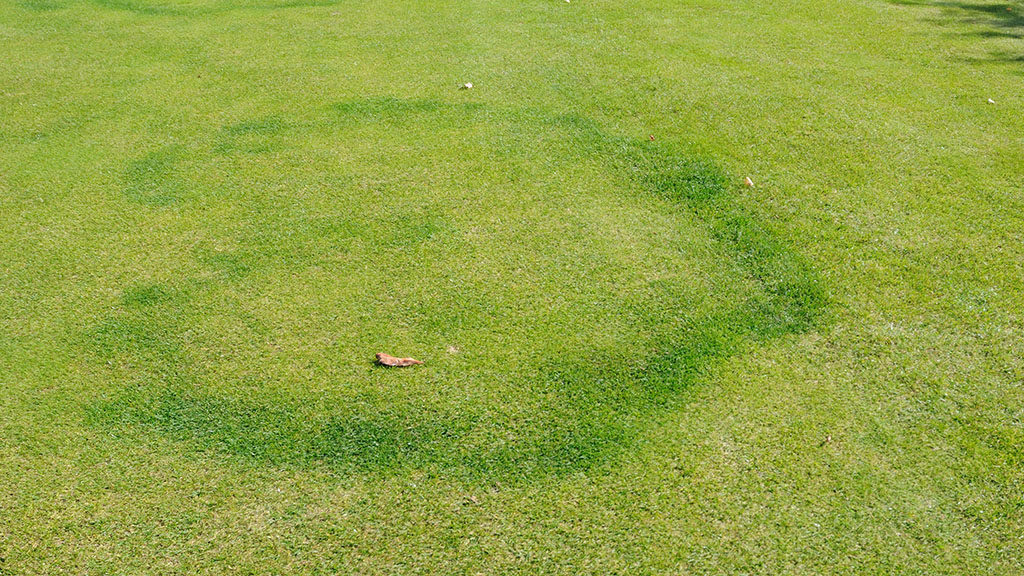
There is also good anecdotal evidence reported by links greenkeepers that fairy ring outbreaks are exacerbated by repeated cycles of soils drying out excessively and rewetting. That would be supported by climatic conditions where we are increasingly experiencing several prolonged periods or extremes of heat and then rainfall withing the same seasons – resulting in greater incidence of the issues.
To minimise then impacts of fairy ring, course managers and irrigation techs are seeking to maintain soil moisture in the root zone as tight as possible to 20-25%. Tracking ET patterns over a period of time gives a better appreciation of how fast soils are drying out, particularly when that can be matched to rainfall figures over the corresponding period.
That can really be enhanced with the use of moisture meters to accurately report soil conditions. Especially using innovative technologies such as Spiio , which is being evaluated by Syngenta with the potential to continuously monitor and report soil moisture levels remotely and integrate automatically into turf management decision support systems.
The Turf Advisor app allows users to design a dashboard specifically for moisture management, including data sets for evapotranspiration, rainfall, soil temperature, growth potential, humidity and wind speed, for example, that will all impact on water use and requirement. Each data set provides the current daily figure, what has happened over the past week - and impacting on the turf now - and a daily forecast for the coming week. Accessed every day during key periods, it importantly enables greenkeepers and agronomists to track recent trends and assess what is likely to happen, to adapt their decision making.
And to take it a step further, disease risk forecasting models for anthracnose and Smith-Kearns dollar spot can be added into the dashboard, to make proactive data-based ITM decisions.



